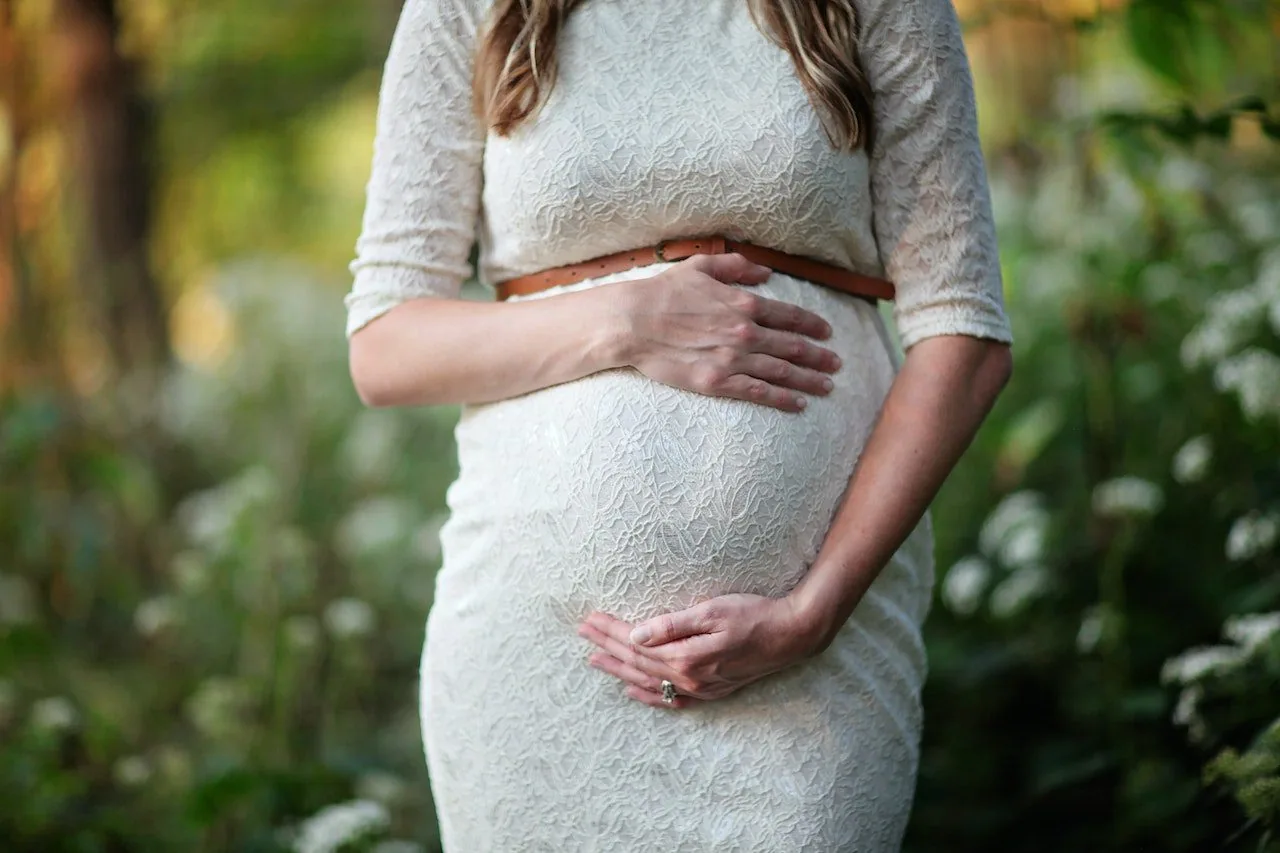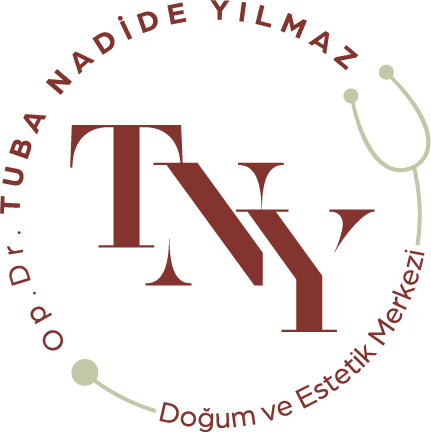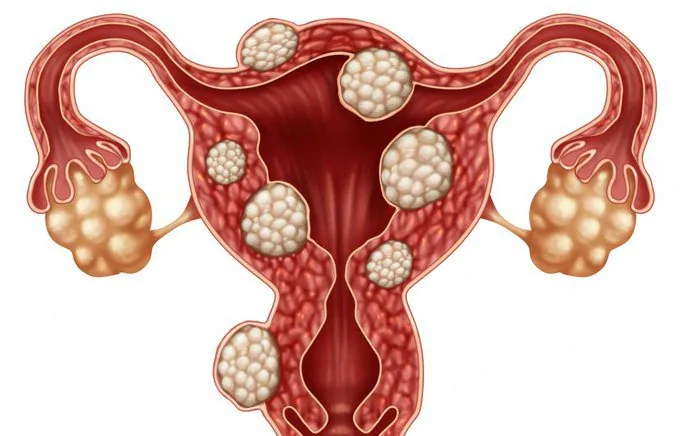Fibroids are common benign tumors affecting women. They occur mainly in women aged 30 years and older. Some fibroids are asymptomatic, while others can cause uncomfortable or even painful symptoms.
What is Fibroids?
Fibroids, also known as uterine fibroids or fibroids, are benign tumors that originate in the uterus (womb). In our field of women's health and gynecology, we use the term "benign" to describe non-cancerous tumors. Fibroids are usually round or semi-round in shape and are often located inside, outside or around the uterine wall.
Causes of Fibroids
Although the exact cause of fibroids is unknown, several possible factors trigger the growth and development of these benign tumors. In particular, high levels of estrogen and progesterone are involved in the growth of fibroids. In addition, genetic factors can also influence the formation of fibroids.
Symptoms of Fibroids
Although many women do not experience any signs of fibroids, some women may have noticeable symptoms. These symptoms include pelvic pain, heavy menstrual bleeding, lower back pain, frequent urination, constipation and heaviness or pressure in the legs.
Fibroids can have a significant impact on women's health, and keep reading the other chapters to explore this topic in more detail. We will focus on the symptoms caused by fibroids and their treatment, especially fibroid surgery. To better understand the effects of fibroids, it is valuable to stay in collaboration with health professionals.
Problems Caused by Fibroids
The range of problems caused by fibroids can be wide. In some women, they may be asymptomatic, while in others they can have a significant impact on daily life and general health. Fibroids can have many effects on women, from indirect problems to pregnancy and childbirth problems and even indirect health problems.
Indirect Problems in Women
Fibroids can affect women's sexual and psychological health. The presence of fibroids can negatively affect a woman's sexual life, causing stress and anxiety in relationships and personal life. In addition, symptoms such as heavy menstrual bleeding and constant abdominal pain can affect work and participation in social activities.
Pregnancy and Birth Problems
Fibroids can cause many problems during pregnancy and childbirth. The location and size of fibroids can have an impact on fertility. In some cases, the presence of fibroids can make conception difficult and even cause miscarriage. During labor and delivery, fibroids can be one of the biggest obstacles to normal delivery by preventing the cervix from dilating.
Indirect Health Problems
Many women report that the presence of fibroids leads to many indirect health problems. Conditions such as chronic pain, a constant feeling of exhaustion and anemia are typical health problems that occur when fibroids grow and their symptoms become severe.
Factors that Aggravate the Problem of Fibroids
We know that the severity and growth rate of fibroids depend on a variety of factors. Understanding the main factors involved in the development and size of fibroids in women allows us to understand why the problem of fibroids is becoming more complex.
Hormonal Changes
Hormonal changes are important factors that exacerbate the problem of fibroids. The hormones estrogen and progesterone play a critical role in the growth of fibroids. Especially in the postmenopausal period, a decrease in the hormone estrogen can cause fibroids to shrink.
Genetic Factors
Genetic factors also play a role in the development of fibroids. If you have a mother or sister who has fibroids, your risk of developing fibroids increases. This indicates that genetic factors play an important role in the development of fibroids.
Lifestyle
Lifestyle factors are another factor that can further complicate the problem of fibroids. Factors such as lack of physical activity, obesity and irregular diet can increase your risk of developing fibroids. Alcohol consumption and high blood pressure can also trigger the growth of fibroids.
Fertility and Difficulties in Conception
Fibroids can cause fertility problems and difficulty conceiving. The location and number of fibroids can directly influence these factors. Fibroids that are small and few in number usually have little effect on fertility. However, fibroids that are large or numerous can disrupt the normal function of the uterus and complicate the conception process.
Fibroid Surgeries
Surgical intervention is one of the methods used to control fibroids. However, just like other treatment options, fibroid surgery carries certain risks. In this section, we will provide information on when surgical intervention is necessary, the different types of surgery and the postoperative period.
In Which Cases Is Surgery Necessary?
The circumstances in which surgery is necessary usually depend on the size, number and location of the fibroids and the severity of the symptoms. Also, if fibroids cause severe back pain, frequent urination, persistent constipation or pain during sexual intercourse, this may require surgery.
Different Types of Surgery
There are usually three types of fibroid surgery: open surgery, laparoscopic surgery and robotic surgery. Open surgery is a classic surgical method, usually used to remove larger fibroids. Laparoscopic surgery is a technique performed through smaller incisions and with the help of a camera. Robotic surgery is used for more complex cases. This is a minimally invasive technique in which the surgeon transfers complex movements to a robot.
Risks and Aftermath of Surgery
Every type of surgery has certain risks. General anesthesia, infection, bleeding and scar tissue formation are potential risks of fibroid surgery. It may also be necessary to completely remove the uterus if the condition becomes more complicated after surgery. After surgery, a significant relief of symptoms is expected, but complete recovery depends on the patient's general health and the type of surgery.
By the end of this chapter, we should understand the importance of surgical intervention in the treatment of fibroids. However, before making a decision, it is best to have a detailed discussion with a health professional who will take into account your specific health factors and personal goals.
Things to Consider After Fibroid Surgery
Many women who decide to have fibroid surgery wonder what to expect regarding the postoperative period and lifestyle changes. In this section, we provide information about what to do after surgery and what kind of lifestyle changes may be necessary.
Postoperative Recovery Process
After fibroid surgery, the speed and nature of the recovery process will depend on the type of surgery and the patient's general state of health. Postoperative pain and a slight feeling of heaviness are normal and usually subside within a few days. Patients can usually return to their normal activities within a few weeks, but full recovery usually takes several months.
Lifestyle Changes
After surgery, some lifestyle changes may also be necessary. A balanced and healthy diet, regular exercise and stress management can speed up the healing process and prevent fibroids from forming again. Regular check-ups and following the doctor's recommendations are also important.
Control Visits and Follow-ups
After surgery, regular follow-up visits and follow-ups are important. These visits are necessary to monitor the healing process and detect any complications at an early stage. In addition, women should contact their doctor immediately in case of any excessive bleeding, pain, fever or signs of infection.
When surgery is chosen as part of fibroid treatment, postoperative considerations help patients better understand the treatment process and set appropriate expectations. This information makes their decision-making process more informed and knowledgeable. In any case, it is important to remember the importance of staying in regular contact with a health professional and following your doctor's recommendations.
Conclusion
Fibroids are a common and treatable health problem that can negatively affect women's quality of life. In this type of health condition, which can lead to different complications depending on its location and size, it is important to work with a health professional to determine the most appropriate treatment option.
Treatment options for fibroids include medication, surgery and alternative medicine approaches. The choice of treatment depends on the size of the fibroids, the woman's general health and her life goals. Medication can be an alternative for women who are avoiding surgery or want to relieve symptoms for a while. However, medication is usually a temporary solution and fibroids often continue to grow when treatment is stopped.
Surgery is often the most effective option for treating large fibroids and provides lasting symptom relief. However, surgery also has risks and full recovery can take several weeks or months. It is important to take care after surgery, structuring regular follow-up visits and making lifestyle changes as needed.
Alternative medicine approaches are another method used to treat fibroids. These approaches alone may not be enough to completely cure fibroids, but they can help relieve symptoms.
In short, fibroids are a condition that can lead to serious health problems and should be treated. It is important to work with your healthcare professional to determine the appropriate treatment option. Since every woman and fibroid condition is unique, the most effective treatment strategy for each patient will depend on a variety of factors. The most important thing to remember is to always seek regular help from a health professional and never ignore the symptoms of fibroids.
Frequently Asked Questions
Here are some frequently asked questions about fibroids and their treatment. These questions are designed to answer the questions that women living with fibroids have in their minds from a broader perspective and to make them more aware of this challenging process.
- Does fibroid surgery affect pregnancy?
Depending on the type of surgery, fibroid surgery can have a negative impact on pregnancy. Scar tissue formation after surgery can make it difficult to conceive or increase the risk of miscarriage in early pregnancy. Therefore, women planning to become pregnant should consider these factors before deciding on surgery to treat fibroids.
- What are the risks of fibroid surgery?
Like any surgical intervention, fibroid surgery has certain risks. These include complications of general anesthesia, infection, bleeding, accidental damage to neighboring organs and scar tissue formation.
- What is the risk of recurrence of fibroids after fibroid surgery?
There is a risk of fibroids developing again after surgery. This risk depends on the number, size and characteristics of the fibroids, as well as the surgical technique and the patient's lifestyle and hormonal status.
- How long does it take to return to normal life after fibroid surgery?
The time to return to normal life depends on the type of surgery, the patient's general health and postoperative care. Usually, patients can resume their daily activities within a few weeks, but full recovery may take several months.
- Are fibroids solved only by surgery?
No, the treatment of fibroids is not limited to surgery. There are several options, including medication, natural and alternative therapies and lifestyle changes. However, not all of these treatment methods completely remove fibroids, they usually relieve symptoms. Cases that require complete removal of fibroids usually require surgical intervention.
Sources:
https://www.ncbi.nlm.nih.gov/pmc/articles/PMC9277653/
https://www.plannedparenthood.org/learn/health-and-wellness/uterine-fibroids
https://www.hopkinsmedicine.org/health/conditions-and-diseases/uterine-fibroids-qa-with-an-expert









